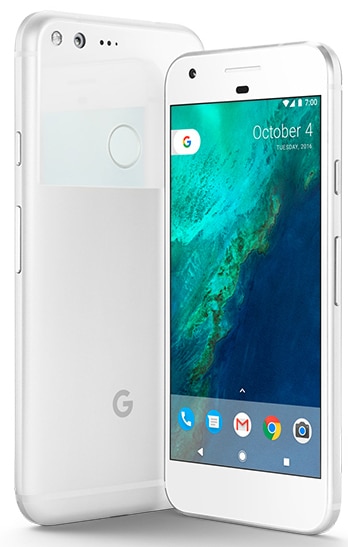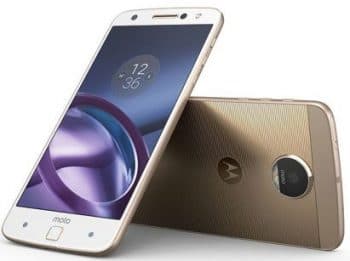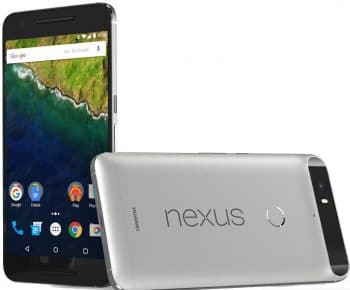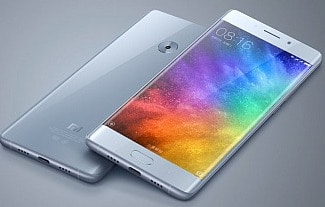
Who wouldn’t like to buy a top-of-the-line Android phone? However, there are so many options and brands to choose from. This little guide gives you the specs and features of the top 10 Android phones introduced in 2016. Choose wisely.
Android phones have dominated the mobile and tablet market for the last four to five years. Picking up the best Android smartphone from the wide range offered by top companies like Samsung, LG, Sony, etc, has become a real challenge. This is more so as various local companies and some Chinese companies have entered the market with phones that are cheap, yet have advanced configurations.
Android phones seem to have little competition from other platforms like iOS, Windows Phone, etc. From sleek devices with premium designs, power-house configurations and smart features, to all-round great devices, these affordable phones have grabbed substantial market share. The Android ecosystem is populated by a staggering variety of attractive phones.
This article presents a line-up of the top Android phones of 2016. The main focus here is on flagship devices, by which we mean the best-in-class with regard to the processor, decent RAM, high end and feature-rich cameras, high speed and fully loaded connectivity options, full to Quad-HD display, decent battery life, the latest version of Android (Marshmallow/Nougat) and much more.
1. Google Pixel XL
Google has partnered with multiple phone makers over the past couple of years. But, in 2016, it finally introduced a smartphone made entirely by Google itself. The software and hardware design were done in-house by Google, incorporating some of the best features – particularly with regard to the software and camera, when compared to Samsung Galaxy 7 and iPhone 7.
- 13.97cm (5.5-inch) Quad-HD AMOLED display at 534ppi
- Snapdragon 821 processor 2.15GHz + 1.6GHz, 64-bit quad core
- 4GB LPDDR4 RAM
- 2.5D Corning Gorilla Glass 4
- 32GB or 128GB storage
- 12.3MP (rear) and 8MP (front) with face detection + laser detection autofocus
- USB Type-C
- Connectivity: Wi-Fi 802.11 a/b/g/n/ac 2×2 MIMO, Bluetooth 4.2, NFC, GPS
- Sensors: Proximity/ALS, accelerometer/gyrometer, magnetometer, pixel imprint, barometer, Hall effect, Android Sensor Hub, and advanced x-axis for sharper response
- 3450mAh non-removable battery
Pros and cons
Pros: Brilliant low-light photography, long battery life, Google Assistant is better than Siri, the best version of Android (which will keep getting continuously updated), bright display.
Cons: Not water-resistant, pricey, no option to expand storage.
2. Samsung Galaxy S7 Edge
Samsung’s S series of phones has played around with a few curved screen smartphones and has become a recognised technology now. Galaxy S7 Edge looks a lot like its predecessor S6, and even technologists call the S7 as S6. Samsung, however, has taken S7 Edge to the next level by introducing water protection and SD card support, and a few more tweaks. What sets the device apart is its high quality optics, wonderful display and performance when multi-tasking.
- 13.97cm (5.5 inches) curved super AMOLED display with 534ppi
- Gorilla Glass 4
- Snapdragon 820 quad-core Kryo processor — 2 x 2.15GHz and 2 x 1.6GHz, Adreno 530 GPU
- 4GB RAM
- 12 MP (rear) + 5 MP (front) with optical image stabilisation, face detection, auto-focus, LED flash
- Wireless charging
- 32/64GB internal storage; microSD card slot up to 200GB
- Connectivity: Wi-Fi a/b/g/n/ac; Bluetooth 4.2, ANT+, NFC, GPS, GLONASS, BEIDOU
- Sensors: Heart-rate monitor, barometer, SpO2 sensor
- 3600mAh non-removable battery with fast charging
Pros and cons
Pros: Easy to handle, fast processing, very good camera, IP68 protection, water resistant, wireless charging, luxurious design.
Cons: Fingerprint magnet, non-removable battery, no FM radio, speaker volume is low.
3. LG V20
The LG V20 is a mammoth phone with top specs and some distinguishing features when compared to Samsung and Google. It is a top-of-the-line phone, featuring Android 7.0 Nougat. Some of its specs don’t quite match up to Galaxy S7 Edge, though. The V20 is a metal smartphone with a secondary display, two rear cameras, and many features for music enthusiasts and people who love mobile photography.
- 14.47cm (5.7 inches) IPS LCD capacitive touchscreen with 16 million colours and 513ppi
- Qualcomm MSM8996 Snapdragon 820 processor (2 x 2.15GHz Kryo + 2 x 1.6GHz Kryo), Adreno 530
- 4GB RAM
- Corning Gorilla Glass 4
- Secondary display–160 x 1040 pixels, 5.33cm (2.1 inches)
- 32GB/64GB with 256GB support (microSD card slot)
- Dual 16MP (rear) + 8MP (front) camera with laser auto-focus, optical image stabilisation, LED flash
- Fast charging
- Connectivity: Wi-Fi 802.11 a/b/g/n/ac, dual-band, Wi-Fi direct, DLNA, hotspot, Bluetooth 4.2, A-GPS, GLONASS, NFS, infra-red, FM radio with RDS, USB Type C
- Sensors: Fingerprint reader, accelerometer, gyroscope, proximity sensor, compass, colour spectrum
3200mAh removable battery
Pros and cons
Pros: Android 7.0 Nougat, durable metal body, loud audio, high quality camera, secondary display and removable battery.
Cons: Low USB transfer speed, difficult-to-use single handed, heavy software layer, limited battery life, not water resistant and the software needs overhauling.
4. Moto Z Force
Moto Z Force offers a modular design and delivers the same premium performance as a regular Moto Z but takes the smartphone specifications to the next level with a better battery, improved camera (especially low light photography), a better screen and much more. Moto Z Force surpasses the Droid Turbo 2 and Moto Z in terms of ergonomics, design and performance.
- 13.97cm (5.5 inches) AMOLED screen with Quad HD display — 1440 x 2560, 535 ppi
- Qualcomm Snapdragon 820 – dual core 2.15GHz Kyro and dual core 1.6GHz Kyro, Adreno 530
4GB RAM - Gorilla glass
- 32GB/64GB internal storage, 256GB support via memory card
- 21MP (rear) + 5MP (front) camera with laser and face detection auto-focus, optical image stabilisation, dual-LED flash
- Connectivity: Wi-Fi 802.11 a/b/g/n/ac, dual-band, Wi-Fi direct, Hotspot, Bluetooth 4.1, A-GPS, GLONASS, NFC, Type C USB
- Sensors: Fingerprint, accelerometer, gyroscope, proximity, compass and ambient light
- 3500mAh non-removable battery
Pros and cons
Pros: Fast performance, light design, fantastic display, accurate and fast finger print scanner, excellent camera.
Cons: No USB cable bundled, no 3.5mm audio jack, limited battery life, higher price.
5. OnePlus 3T
OnePlus is one of the fastest growing companies in the Android market of flagship phones. In a competitive market like India, it has surprisingly occupied one of the top spots. The OnePlus 3T is a vivid example of how far the smartphone has come in terms of craftsmanship. Everything looks beautiful and sleek on this phone.
OnePlus 3T is very comfortable to hold and the placement of every button is good. The OnePlus 3T is one of the phones that kickstarted a tough, competitive market for value-driven devices with high-end specs.
- 13.97cm (5.5 inches) optic AMOLED display with full HD resolution with 401ppi
- Metal black body with Corning Gorilla Glass 4
- Snapdragon 821 SoC (2 x 2.35GHz + 2 x 1.6GHz) processor, Adreno 530 GPU
- 6GB LPDDR4 RAM
- 64GB/128GB fast UFS 2.0 storage
- 16 MP (rear) + 16 MP (front) camera with face detection auto-focus, optical image stabilisation, single LED flash, 2160p video @ 30fps
- Connectivity: 4G LTE, Wi-Fi 802.11 a/b/g/n/ac, Bluetooth 4.2, GPS, GLONASS, BDS, USB Type-C
- Sensors: Fingerprint scanner, hall sensor, accelerometer, gyroscope, proximity sensor, ambient light sensor, electronic compass
- 3400mAh (non-removable battery) with dash charge utility
Pros and cons
Pros: Metal unibody design, 4K video recording, dual SIM 4G LTE support, powerful processor, responsive fingerprint sensor, good battery life, compatible with VR headsets, bright camera.
Cons: No FM radio or microSD card, non-removable battery.
6. Google Nexus 6P
The Google Nexus range of devices has become a standard with regard to configuration and performance. The Nexus 6P was the first of Google Android’s premium phone offerings. The design of the Nexus 6P is a strong rival to the iPhone 6S Plus, Samsung Galaxy S7 and Note 7.
- 14.47cm (5.7 inches) AMOLED capacitive touchscreen with 16 million colours, 1440 x 2560 pixels and 518ppi.
- 3GB LPDDR4 RAM
- Qualcomm Snapdragon 810 octa-core (4 x 1.55GHz Cortex A53 and 4 x 2GHz Cortex A57), Adreno 430 GPU
- 32GB/64GB/128GB internal storage
- 12.3MP (rear) + 8MP (front) camera with laser auto-focus, dual-LED flash, geo-tagging, touch focus, face detection, HDR, panorama
- Connectivity: Wi-Fi 802.11 a/b/g/n/ac 2×2 MIMO, dual-band, Bluetooth 4.2, NFC, GPS, GLONASS, digital compass, USB Type C
- Sensors: Fingerprint, accelerometer, gyroscope, proximity, barometer
- 3450mAh non-removable battery
Pros and cons
Pros: Excellent display, speedy performance, decent camera, good battery life, responsive finger print scanner.
Cons: No microSD card slot, optical image stabilisation, wireless charging nor FM radio, and is expensive.
7. HTC 10
The HTC 10 is another great flagship Android phone of 2016, which flaunts next generation hardware. HTC fitted the phone with a 2K display, UltraPixel camera and a best-in-class audio quality. HTC 10 has a lightning fast performance compared to Huawei P9 and is regarded as the first phone to have optical image stabilisation in the front camera.
- 13.2cm (5.2 inches) Quad HD Super LCD 5 capacitive touchscreen, 1440 x 2560 resolution, 564ppi
- 4GB LPDDR4 RAM
- Qualcomm Snapdragon 820 quad-core (2 x 2.15GHz Kryo and 2 x 1.6GHz Kryo) processor
- 32GB/64GB internal storage; expandable up to 256GB via microSD slot
- 12MP (rear) + 5MP (front) camera with optical image stabilisation, geo-tagging, laser auto-focus, flash
- Connectivity: Wi-Fi 802.11 a/b/g/n/ac, dual-band, Wi-Fi direct, DLNA, hotspot, Bluetooth 4.2, A-GPS, GLONASS, BDS, NFC, USB Type C
- Sensors: Fingerprint, accelerometer, gyroscope, proximity and compass
- 3000mAh non-removable battery
Pros and cons
Pros: Iconic design, good audio quality, UltraPixel camera with OIS at the front and back, fast charging.
Cons: Top mounted headphone jack, finicky laser auto-focus, lock button placement.
8. Xiaomi Mi Note 2
Xiaomi Mi Note 2 is a premium, luxurious smartphone with a curved glass and looks more like the Note 7. Another flagship phone by Xiaomi, it has glass on both sides, unlike the ceramic-backed Mi Mix, which makes the phone more prone to scratches. Excellent technical specifications and features ensure great performance.
- 14.47cm (5.7 inches) AMOLED capacitive touchscreen, 16 million colours, 1080 x 1920 resolution and 386ppi
- 4GB RAM/ 6GB RAM
- Qualcomm Snapdragon 821 quad-core processor (2 x 2.35GHz Kryo + 2 x 1.6GHz Kryo) processor, Adreno 530 GPU
- 64GB/128GB internal storage; no SD card slot
- 22.5 MP (rear) + 8 MP (front) camera with EIS (Gyro), face detection autofocus, dual-LED flash
- Connectivity: Wi-Fi 802.11 a/b/g/n/ac, dual-band, Wi-Fi direct, hotspot, Bluetooth 4.2, NFC, A-GPS, GLONASS, BDS, infra-red, USB Type C
- Sensors: Fingerprint, accelerometer, gyroscope, proximity, compass, barometer
- 4070mAh non-removable battery
Pros and cons
Pros: Overall camera and better performance, fast charging, optimised display for better viewing, dual SIM with VoLTE support, secure payments due to fingerprint scanner, IR sensor works like a universal remote.
Cons: No SD card slot, bulky, no FM radio.
9. Huawei P9
Huawei had a low profile in the Indian market last year. Its previous flagship phone was Huawei P8. After the launch of the Nexus 6P, Huawei launched the P9. While the phone’s camera performance is good, its overall performance is not great due to shoddy software.
- 13.2cm (5.2 inches) IPS-NEO LCD capacitive touchscreen, 1080 x 1920 pixels, 16 million colours, 423ppi
- 3GB/4GB RAM
- HiSilicon Kirin 955 octa-core (4 x 2.5GHz Cortex-A72, 4 x 1.8GHz Cortex A-53) processor
- 32GB/64GB internal memory, expandable to 256GB via SD card slot
- 12 MP (rear) + 8 MP (front) camera with Leica optics, face detection auto-focus, dual-LED flash
- Connectivity: Wi-Fi 802.11 a/b/g/n/ac, dual-band, Wi-Fi direct, hotspot, Bluetooth 4.2, A-GPS, GLONASS, BDS, NFC, USB Type C
- Sensors: Fingerprint, accelerometer, gyroscope, proximity, compass
- Li-ion 3000mAh non-removable battery
Pros and cons
Pros: Excellent camera with fantastic low-light performance, good looks and well built, responsive fingerprint scanner.
Cons: No image stabilisation, no 4K recording option, performance lags, overpriced when compared to competitors with the same configurations.
10. LeEco Max 2
The LeEco Max 2 might be a slightly larger phone, but it is one of most affordable options offering a flagship class Qualcomm Snapdragon 820 SoC. This device features a bright 2K display with good viewing angles. LeEco bundles a free subscription of Le Live and Le Vidi apps, which offer live TV and movie content. The rear camera does a good job, although the battery life could have been better.
- 14.47cm (5.7 inches) LTPS IPS LCD capacitive touchscreen, 1440 x 2560 resolution, 16 million colours, 515ppi
- 4GB RAM / 6GB RAM
- Qualcomm MSM8996 Snapdragon 820 quad-core (2 x 2.15GHz + 2 x 1.6GHz) Kryo processor, Adreno 530 GPU
- 32GB/64GB internal memory; no memory card slot
- 21MP (rear) + 8MP (front) camera with face detection auto-focus, dual LED flash
- Connectivity: Wi-Fi 802.11 a/b/g/n/ac, dual-band, Wi-Fi direct, hotspot, Bluetooth 4.2, A-GPS, GLONASS, BDS, NFC, infra-red, USB Type C
- Sensors: Fingerprint, accelerometer, gyroscope, proximity, compass
- Li-ion 3100mAh non-removable battery
Pros and cons
Pros: Fast performance, good camera quality with 4K recording, good music experience via Dolby Atmos, fast charging, value for money, smooth 3D gaming experience.
Cons: No expandable memory, limited battery and no 3.5mm headphone jack.





















































































Google Pixel XL is still the best for its money. Doesn’t slow down in games even the most difficult Mostbet games!